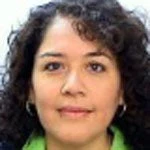Anybody who has been through the California school system, like me, will immediately recognize the phrase, “Stop, Duck, and Cover” to mean one thing – EARTHQUAKE! On a lucky day, it would be a drill, but we’d often get the real deal. Not that we didn’t learn other things in school, but preparing for natural disasters, in our case earthquakes, was an integral part of our education in California. As soon as I would hear this phrase, I knew to stop what I was doing, duck down under my school desk, and clasp my hands together and cover the back of my neck to protect it from falling debris.
The Caribbean region, unlike California, is not home to many earthquakes, but it is home to other natural disasters - hurricanes and tropical storms - which like earthquakes, cause tragic loss of life and have serious economic impact. For example, in 2005 Hurricane Ivan swept through Grenada and Jamaica, causing an estimated US$1.3 billion dollars damage and in that same year, extensive flooding in Guyana cost the country a staggering 60% of its GDP.
Natural disasters not only have a great economic impact, but they also negatively affect the nutritional status of vulnerable populations. Short term changes in food intake caused by natural disasters can affect the growth and development of infants and young children during their first 1,000 days of life, pregnant and lactating women, the elderly, the disabled, and people living with certain diseases such as diabetes or HIV. In the face of a natural disaster, these groups may not have access to key nourishments to maintain their needed food intake nor essential medicines.
So how can California’s “Stop, Duck, and Cover” approach help the Caribbean region protect the nutritional status of vulnerable groups during natural disasters? Despite “Stop, Duck, and Cover” appearing to be a simple phrase, it is actually part of a broader emergency plan which includes public awareness preparedness messages to educate California’s population on how to immediately protect yourself in the face of a natural disaster.
This type of a broad approach can be relevant in the Caribbean as the region can implement its own strategy to instead of “Stop, Duck, and Cover” it can “Plan, Monitor, and Train” to protect the nutritional status of vulnerable populations in disaster situations.
- The Caribbean can “Plan” for such natural disasters by having actual emergency plans in place with specific actions that can provide guidance on securing the nutritional status of the vulnerable groups.
- The Caribbean region will also need to “Monitor” these plans to ensure the groups identified as vulnerable in these situations are being reached through the provision of key health services that can include essential medicines and needed food intake.
- The region will also need to “Train” core groups of local health practitioners to develop a skills base among a region of experts capable of analyzing internationally recommended policies to protect nutrition in emergency situations. These trained groups can in turn advocate government bodies to include these policies in national emergency plans.
To help the region with the training aspect, the World Bank, Pan-American Health Organization and a group of regional partners recently launched a self-paced, web-based introductory course on Food Safety, Health, and Nutrition in Emergencies in the Caribbean.
This online course was developed and validated by a group of core health, nutrition, and disaster management practitioners from Dominica, Grenada, Saint Lucia, and Saint Vincent and the Grenadines. Regional partners include the Institute of Nutrition of Central America and Panama (INCAP), the Caribbean Public Health Agency (CARPHA) and The Caribbean Disaster Emergency Management Agency (CDEMA), who made it possible to take the Harmonized Training Package in Nutrition in Emergencies, a resource developed by the Global Nutrition Cluster, and customize it to the epidemiological profile and needs of the Caribbean region.
Although earthquakes may not be as frequent in the Caribbean as hurricanes, the simplicity and integration of California’s, “Stop, Duck, and Cover” into the educational system can offer valuable insight for the Caribbean. So while Californians continue to “Stop, Duck, and Cover”, the Caribbean can look to a, “Plan, Monitor, and Train” approach to protect the nutritional status of their vulnerable populations during disaster and emergency situations.
Follow me on Twitter: @CC_CarmenCarpio
Follow the World Bank health team on Twitter: @WBG_Health
Related:



Join the Conversation